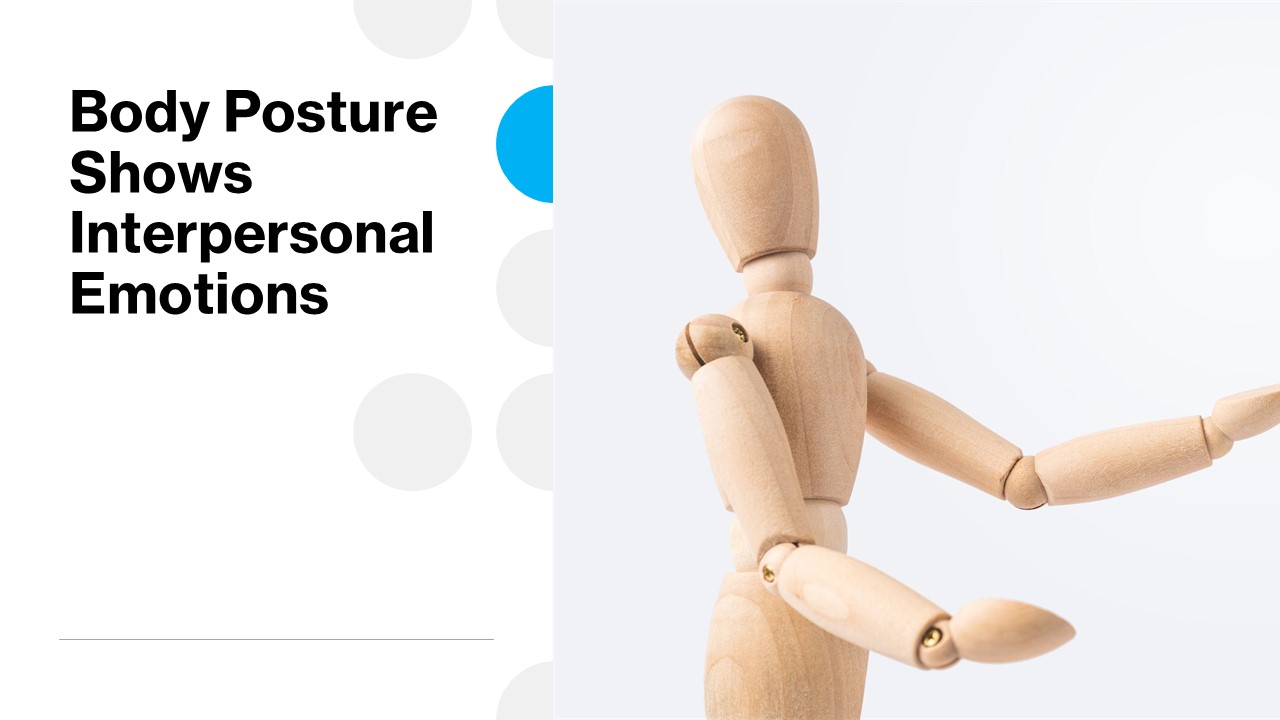Both our verbal and nonverbal communication express our interpersonal emotions and love. What our facial and bodily expressions say is not less important than what we say. We can say, “I love you,” yet our posture can tell something else. Sometimes our postures show more than what we say. Studies reveal that our facial expression, body movement, and posture show our emotions more than what we say in words.
How Our Bodies and Posture Show Emotions
People frequently tell us that our emotions are “written all over our faces.” That’s because our facial expressions are a primary means of communicating emotions. All these nonverbal expressions show our emotions, whether we are happy by smiling and crinkling our eyes or angry by furrowing our brows and tensing our lips (Karandashev, 2021).
According to recent studies that Patty Van Cappellen conducted at Duke University, our body language can communicate our emotions to others. This may sound surprising, but not only our faces express our emotions, but our body posture does this too.
What the Study of Posture Shows
Van Cappellen and her colleagues investigated the role of body posture in emotional expression in a novel way. They asked a group of people to pose miniature, faceless mannequins in positions that represented four different emotions to them: dominance, joy, hope, and awe.
Some of these emotions are linked to “expansive” postures—where people take up more space by standing erect, opening up their torso, or extending their limbs away from their body. Additionally, the researchers were interested in what ideas people would come up with on their own without assistance from actors or others.
In the study, research assistants were unaware of the experiment’s purpose. The principal investigators asked them to examine photos of the mannequins that participants had created. They assessed their head positions, arm positions, and degrees of expansiveness, measured both horizontally and vertically. The researchers then compared these positions to the alleged feelings they expressed.
Van Cappellen discovered that people interpreted an expansive posture as denoting dominance. This finding was consistent with earlier studies. However, the researchers revealed that even more than dominance, expansive postures represented joy and awe.
As Van Cappellen noted,
“We’re looking at how people express their positive emotions in their full body, and it’s clear that how much space your body takes up is present in other emotions or effective states beyond dominance. We’re finding that positive emotions are also marked by expansiveness—especially joy, which is even more expansive than dominance.”
The Study Revealed that Posture Shows More than We Might Think
Moreover, researchers also observed differences in arm and head positions. For example, arms raised above the head and the head tilted upward represented joyful postures. Awe postures were represented by hands touching the face or hovering near the head. Dominant postures, on the other hand, displayed arms akimbo (hands on hips, elbows out) with the head forward.
This means that emotions are not only communicated in the face but rather fully embodied. The author noted that “the expression and production of emotions is a full-body experience,” and they found signature arm positions for each emotion.
Van Cappellen was also curious as to whether observers of the mannequins would be able to discern the emotions that the various postures represented. The authors used photographs of mannequins that were posed in various ways. The expansiveness remained constant while the arm and head positions varied. Then Van Cappellen asked participants to rate the mannequins based on how well they conveyed a variety of emotional traits, such as extraversion, dominance, energy, warmth, competence, and overall positive and negative feelings.
Participants discovered that expansive postures with arms held high represented positive emotions such as extraversion and warmth. The body position of arms akimbo represented dominance and negative emotion. This supports the notion that people rely on body language to interpret the emotions of others.
As Van Cappellen concludes,
“We’re constantly trying to know what another person is feeling and trying to infer what they’re going to do—and that comes [in part] from their body posture.”
